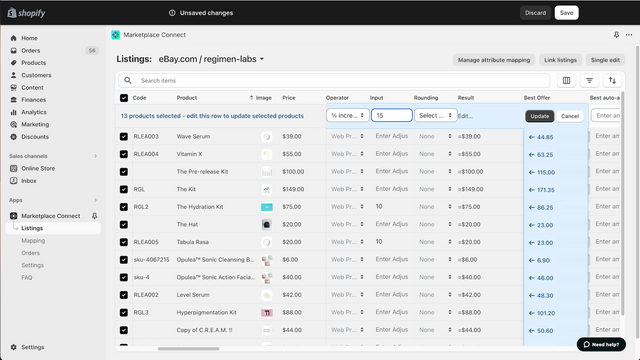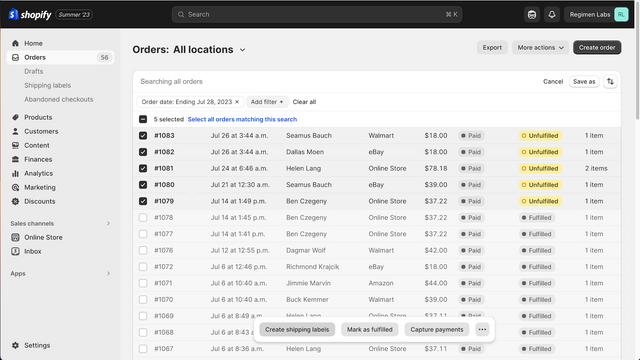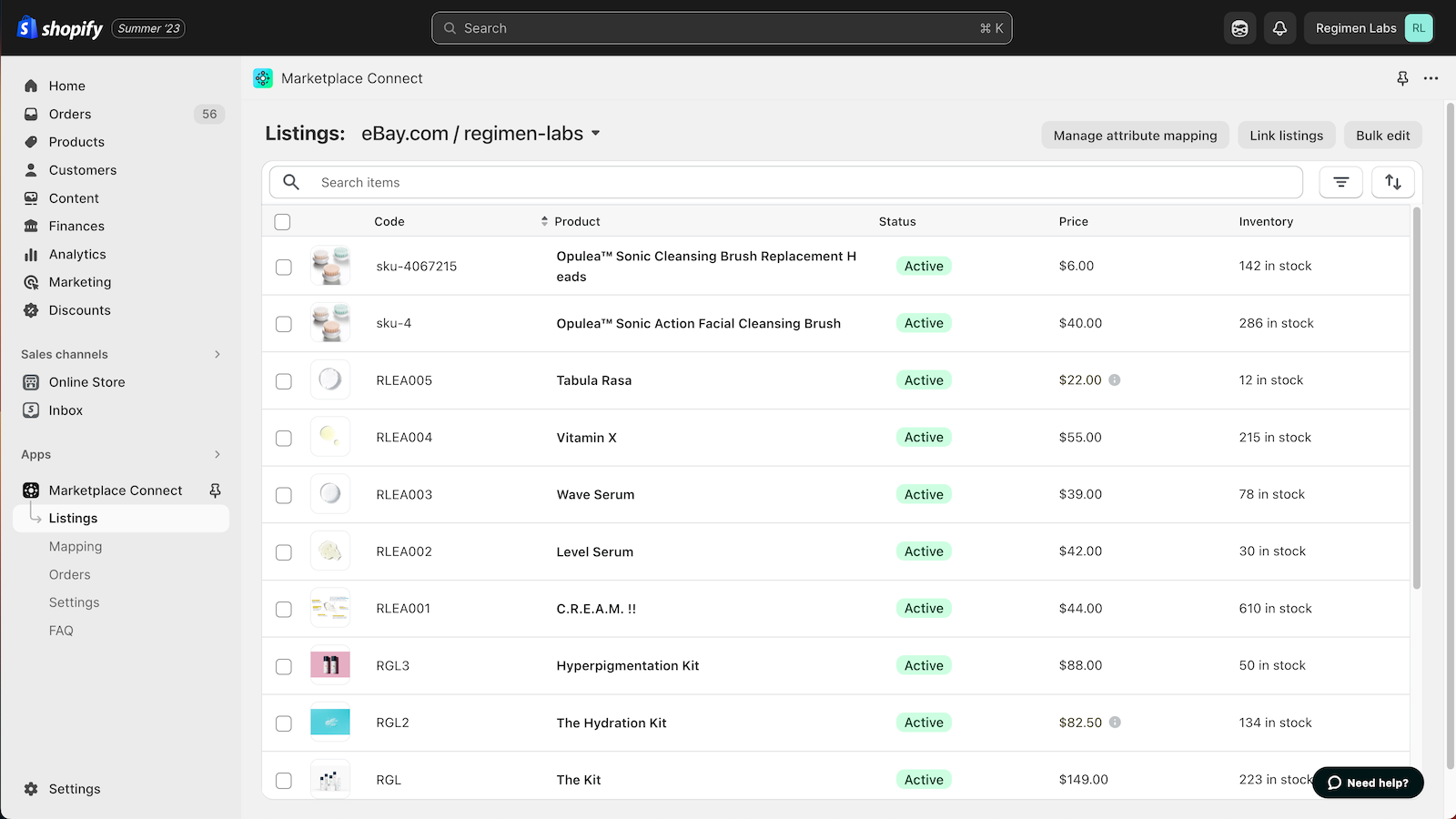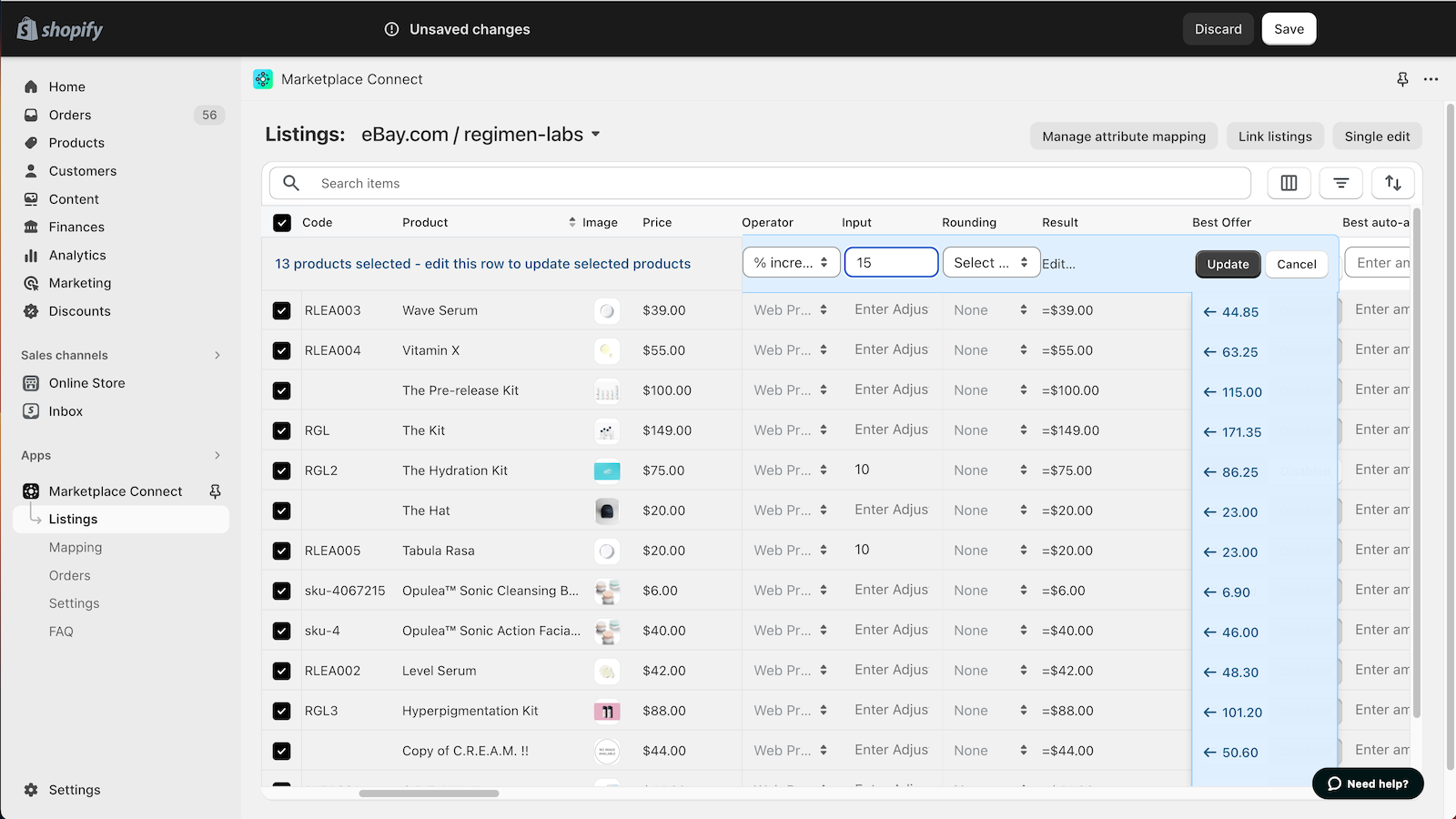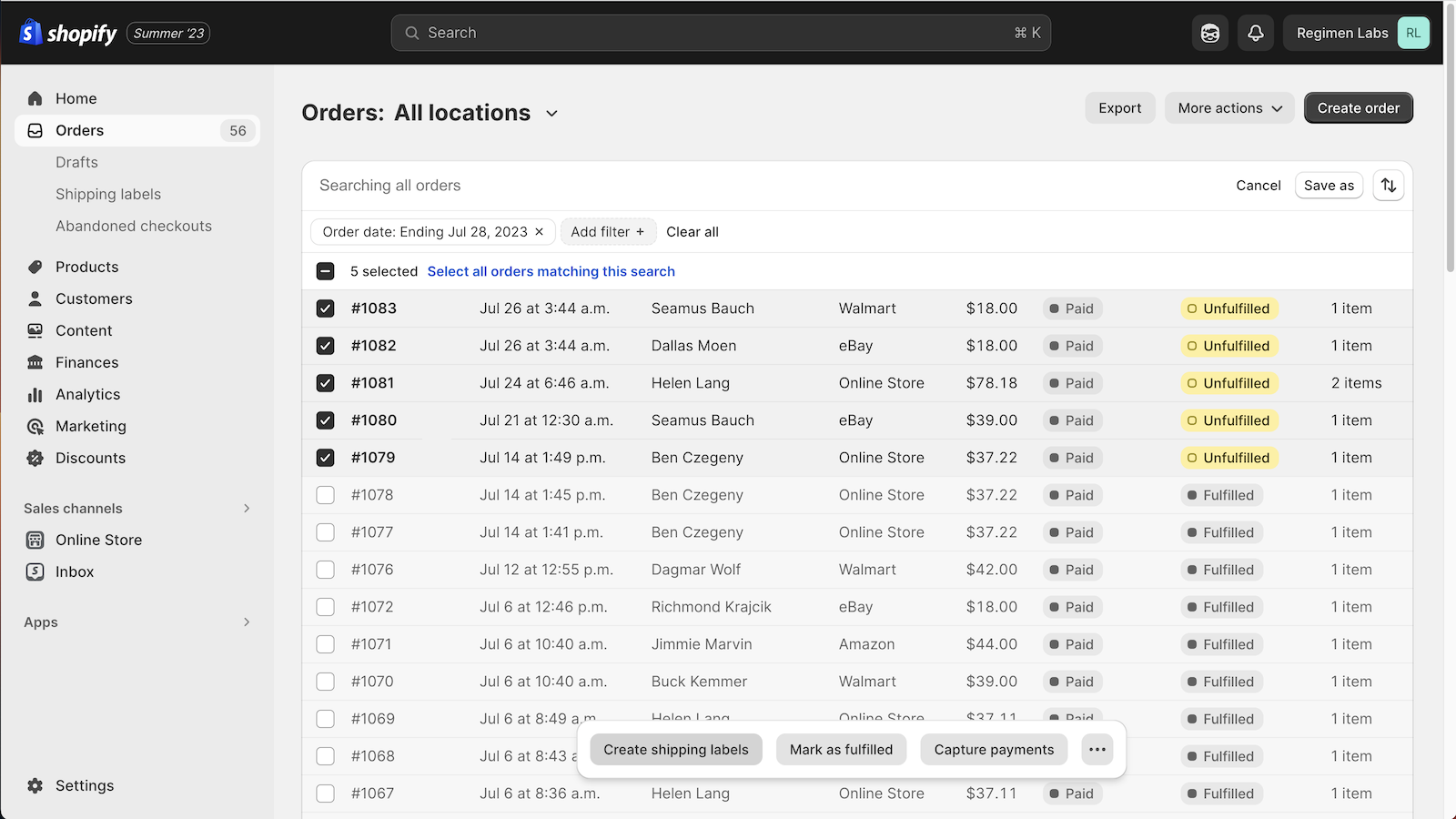Featured images gallery
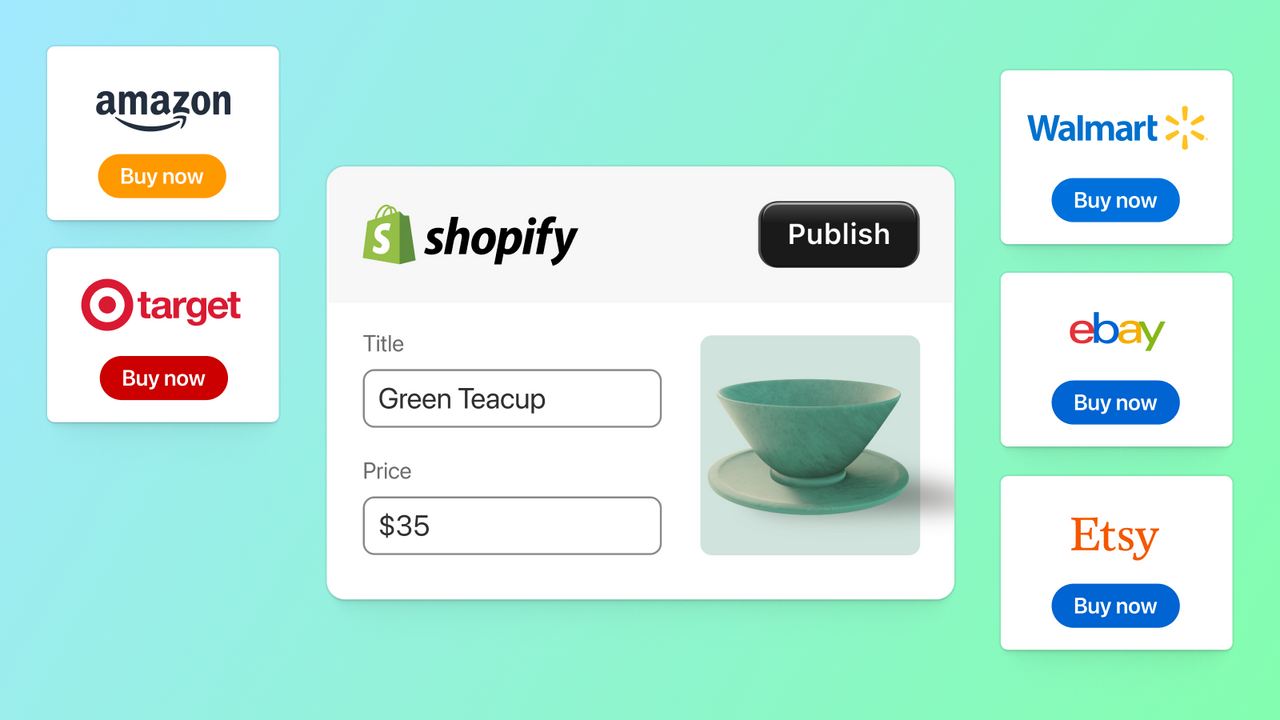
Sell across marketplaces like Amazon, Target Plus, eBay, Walmart, & Etsy. Manage it all in Shopify
Shopify Marketplace Connect (formerly Codisto) is the fastest and easiest way to sell across top global marketplaces like Amazon, Target Plus, Walmart, eBay, and Etsy. A single app to connect and integrate your Shopify product catalog with multiple marketplaces to effortlessly manage and synchronize listings, orders, inventory, and measure performance all from one place, Shopify.
- Sell products on marketplaces like Amazon, Target Plus, eBay, Walmart, and Etsy
- Manage listings, orders, & inventory in Shopify with real-time marketplace sync
- Flexible fulfillment options to support integrated channel strategies
- Unlimited marketplace account connections for supported marketplaces
- Sell in all marketplace regions and categories with built-in currency conversion
- Popular with stores like yours
- Based in United States
- Highlights
- Use directly in Shopify admin
Languages
English, German, Spanish, French, and Italian
Works with
- Amazon
- Target Plus
- Walmart
- eBay
- Etsy
Categories
Listing management
Data migration
Pricing
Free
Free to install
First 50 marketplace-synced orders/mo free, 1% fee per additional synced-order, capped at $99/month
All charges are billed in USD. See all pricing options
Reviews (1,678)
What merchants think
This is generated by Shopify Magic. It's shown when an app has 100+ reviews and a 4.0 overall rating.
This is generated by Shopify Magic. It's shown when an app has 100+ reviews and a 4.0 overall rating.
Feedback submitted
Merchants highly praise this app for its ability to manage and sync inventory across multiple platforms such as Etsy, eBay, Amazon, Walmart, and Target. They appreciate its user-friendly interface, efficient bulk editing tools, and direct handling of orders within Shopify. The support team is noted for their quick and helpful service, especially via the live chat feature. The app is recognized for its fast product and order syncing and seamless integration.
First off the customer service is top notch. While I was learning how to use this app they have been nothing but helpful and patient with answering my questions. I also mistakenly caused an issue with my ebay template. Chloe took the time along with Ediline to figure it out and correct my issue. A+ all the way support. I also tried a few other inventory management apps and chose Marketplace Connect as being better than the rest for my store. It's been the solution i needed all along and look forward to the growth of my store because of it. Thank you!
Customer service to help you through is a top priority. With links, walkthroughs, and simple advice from Joshua R we had my store up and rolling in no time. Finding errors and fixing them was a breeze with help. Thanks for this customer service extension and fast answers.
I recently had the pleasure of chatting with Joy V from Marketplace Connect support, and I must say, the experience was fantastic! Joy was incredibly helpful and attentive, guiding me through the process of resolving a listing status error for my linked products.
From the moment I started the chat, Joy was quick to understand my issue and provided clear instructions on how to fix it. They took the time to check my account and even resubmitted the price value to Amazon, which cleared the error promptly. Joy's knowledge and efficiency made the process smooth and stress-free.
What impressed me the most was Joy's patience and willingness to assist with all my queries, even when I needed to check multiple SKUs. They provided valuable insights on how to ensure my products were linked correctly and offered helpful resources for future reference.
Overall, Joy V's support was exceptional, and I truly appreciate the assistance I received. I would highly recommend Marketplace Connect support to anyone facing similar issues. Thank you, Joy, for your outstanding service!
Support
App support provided by Shopify.
Get supportFeatured in
More apps like this









